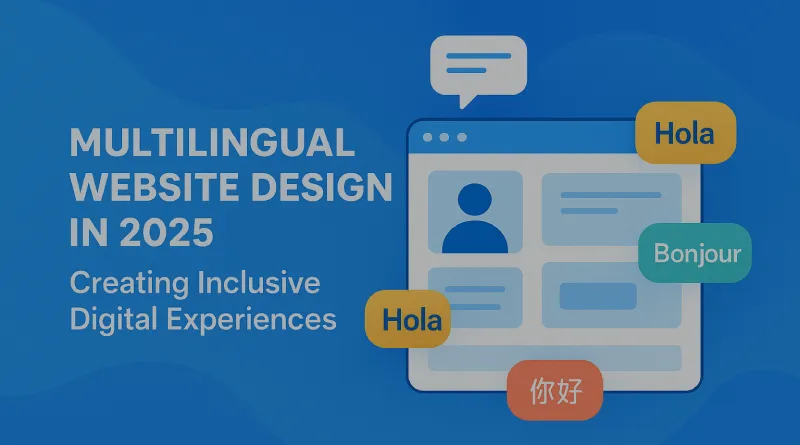Multilingual Website Design in 2025: Creating Inclusive Digital Experiences
The digital landscape has become more global than ever, and businesses today recognize the importance of connecting with diverse audiences. By 2025, multilingual website design is no longer just a competitive edge—it’s a necessity. With the rise of AI-driven personalization, cross-border e-commerce, and a multilingual internet population, creating websites that speak directly to users in their native languages is the cornerstone of successful global branding.
Why Multilingual Websites Matter in 2025
As of 2025, over 60% of internet users are non-English speakers. While English remains dominant in business, users are more likely to trust and engage with a website that communicates in their language. For businesses expanding across markets, multilingual website design helps:
- Build trust and credibility.
- Improve user experience and accessibility.
- Boost SEO visibility in local markets.
- Increase conversion rates by reducing language barriers.
This evolution isn’t just about translation—it’s about cultural adaptation, inclusivity, and personalized experiences.
Key Trends in Multilingual Website Design
1. AI-Powered Translation & Localization
Gone are the days of word-for-word translations. AI now ensures context-aware translations, adapting tone, cultural nuances, and even visual elements to resonate with local audiences. For instance, an e-commerce site in 2025 doesn’t just translate product descriptions but also adjusts currencies, sizes, and customer reviews according to the user’s location.
2. Inclusive Typography and Design
Designers are increasingly using font families that support multiple scripts—whether Latin, Cyrillic, Arabic, or Devanagari. Flexible layouts ensure that right-to-left (RTL) languages such as Arabic and Hebrew display seamlessly, creating a consistent experience across languages.
3. Personalized Language Switching
Instead of static dropdowns, websites now leverage geolocation and browser preferences to auto-suggest relevant languages. However, transparency remains key, allowing users to switch easily if they prefer another language.
4. SEO-Optimized Multilingual Structures
Search engines in 2025 prioritize localized content. Websites use hreflang tags, country-specific domains, and multilingual metadata to improve search rankings. This ensures that users in Paris, Tokyo, or Mumbai land on the most relevant version of the site.
5. Voice & Multimodal Interfaces
With the rise of voice assistants, multilingual websites are now integrating natural language processing (NLP) for speech queries. A user in Mexico, for example, can interact with a site in Spanish using voice, making navigation more natural and inclusive.
Best Practices for Designing Multilingual Websites
- 1. Plan for scalability - Choose a CMS that supports multiple languages and can expand as new markets open.
- 2. Design flexible layouts - Different languages may expand text length, so ensure UI elements adjust without breaking.
- 3. Localize beyond words - Adapt imagery, colors, and cultural references to align with local sensibilities.
- 4. Test across markets - Conduct usability tests with native speakers to identify design or translation gaps.
- 5. Maintain consistency - While content is localized, branding, tone, and overall experience should remain unified.
Conclusion
In 2025, multilingual website design is more than a technical upgrade—it’s a strategic approach to inclusivity and global growth. Businesses that prioritize cultural sensitivity, AI-driven localization, and seamless user experiences will be best positioned to thrive in an interconnected digital economy.
A well-designed multilingual website not only speaks different languages but also connects hearts, cultures, and markets.
Disclaimer
The information presented in this blog is derived from publicly available sources for general use, including any cited references. While we strive to mention credible sources whenever possible, Digital Marketing Company in Mumbai does not guarantee the accuracy of the information provided in any way. This article is intended solely for general informational purposes. It should be understood that it does not constitute legal advice and does not aim to serve as such. If any individual(s) make decisions based on the information in this article without verifying the facts, we explicitly reject any liability that may arise as a result. We recommend that readers seek separate guidance regarding any specific information provided here.

